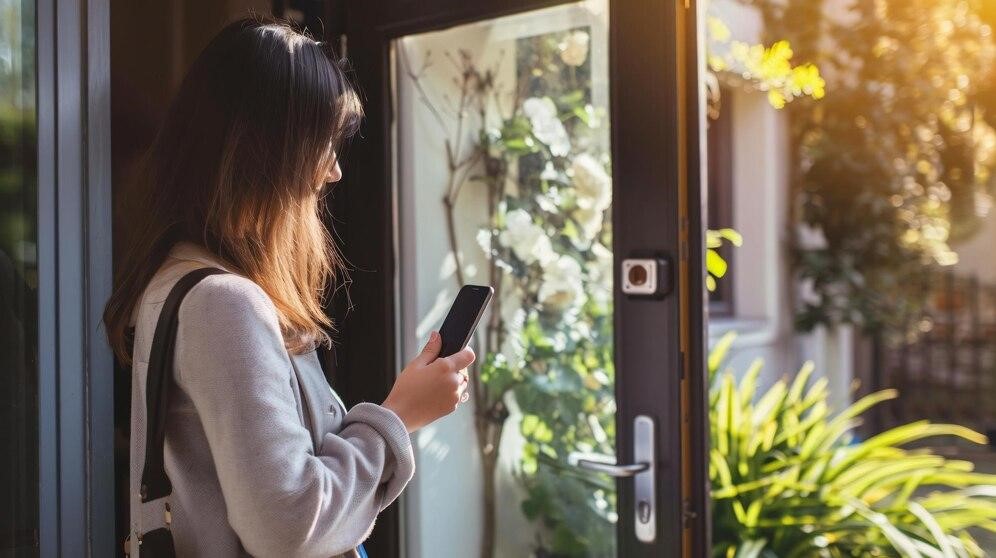The Internet of Things (IOT) is revolutionizing the way we think about doors and windows, transforming them from mere architectural features into integral components of a connected home. Therefore, with the increasing demand for enhanced security, energy efficiency, and convenience, integrating smart technology into the installation of doors and windows is essential for staying ahead in the market. Smart windows and doors can provide your clients with advanced features such as automated locking systems, remote access, energy-saving capabilities, and even real-time monitoring. These cutting-edge solutions can set your project apart! However, the successful implementation of these technologies relies on selecting the right partners. By working with a reliable door and window installation company with experience in smart home automation, you can ensure that your projects exceed your clients’ expectations. This article explores the latest smart technologies for doors and windows, discussing their benefits and how they can be integrated into your construction projects. Benefits of Smart Technologies Automated systems and connected features in smart door and window technologies elevate security, comfort, and energy efficiency. Here are the key benefits: Enhanced security Automated locking systems and motion sensors offer homeowners peace of mind, knowing that the latest technology protects their property. These features deter intruders and allow real-time monitoring, making smart security systems necessary for any modern construction project. Increased energy efficiency Technologies such as smart windows can automatically adjust their color based on the intensity of sunlight, reducing the need for artificial lighting and lowering cooling costs during hot seasons. Incorporating these technologies into your projects contributes to the building’s sustainability and offers your clients long-term savings on energy bills. Comfort and convenience Your clients can program their windows to close automatically during rain or high winds or use voice commands to lock doors as they leave the house. This level of automation simplifies daily routines and improves the overall living experience by providing a more responsive and adaptable environment. Examples of Smart Technologies for Doors and Windows People today are increasingly connected and want their homes to reflect that. They’re looking for innovative ways to integrate technology, particularly in doors and windows, to enjoy all the benefits we’ve already mentioned. Here are some examples of how cutting-edge technologies and smart doors and windows are revolutionizing residential construction: Smart doors These doors are equipped with advanced features that go beyond traditional security measures: Digital locks Digital locks allow your clients to secure their property without needing traditional keys. Instead, users can unlock doors using smartphones, keypads, or fingerprint recognition. These locks can be programmed to grant access to specific individuals at certain times, particularly useful for managing deliveries or maintenance visits. Facial recognition Some smart doors are equipped with facial recognition technology, adding an extra layer of security. These systems can identify authorized individuals and automatically unlock the door while denying access to unrecognized faces. Smart windows Smart windows offer dynamic control over light, privacy, and energy efficiency: Adjustable opacity glass Windows equipped with this technology can switch from transparent to opaque with the touch of a button or automatically based on the time of day. This feature offers privacy when required and maximizes natural light, reducing the need for blinds or curtains. Breakage sensors Smart windows can also be equipped with breakage sensors that detect when the glass is shattered. These sensors can trigger alarms, send alerts to your client’s smartphone, and even notify local authorities. Integrated home automation systems By connecting various devices and systems within a home, these systems create a unified and intelligent environment. Centralized control Your clients can manage all their smart devices, including doors and windows, from a single platform, whether a smartphone app or a home automation hub. This allows for synchronized actions, such as locking all doors, closing all windows, and setting the security system with a single command. Energy management Home automation systems can optimize energy usage by coordinating the operation of smart windows with other systems, like heating and cooling. For instance, windows can automatically adjust their opacity or open slightly to regulate indoor temperature, working in tandem with the HVAC system to maintain comfort while reducing energy consumption. Now that you know the benefits and the main features that can be installed in your projects, you need to understand the practical side of how to integrate them into your projects. Implementing Smart Technologies in Construction Projects Incorporating IoT is a strategic move that can improve the building’s value, appeal, and functionality. However, successful implementation requires careful planning and consideration. Here are a few tips on how to integrate smart technologies into your projects: Integrating smart technologies into new projects Integrating IoTs from the ground up is the most efficient approach. This allows for seamless incorporation of systems and ensures that all components work together harmoniously. Early planning Start by identifying the specific IoTs your client wants to incorporate, such as smart doors, windows, or comprehensive home automation systems. Involving a door installation company or window installation company with experience in smart technologies during the design phase is crucial. They can offer valuable insights into the best products and practices for optimal performance. Infrastructure setup Smart technologies often require specific infrastructure, such as wiring for power and data or space for control panels and hubs. Make sure that these requirements are factored into the architectural and electrical plans from the beginning. System integration Work with experts who can integrate all smart components into a unified system. Whether it’s doors with facial recognition, windows with adjustable opacity, or a fully automated home, ensuring that all systems communicate effectively is key to delivering an integrated smart home experience. Cost and feasibility considerations While the benefits of smart technologies are clear, it’s essential to consider the costs and feasibility of implementation, especially when working within budget constraints. Initial investment The upfront cost of smart technologies can be higher compared to traditional options. However, it’s important to weigh this against the long-term benefits, such as energy savings, enhanced security, and increased property value.

